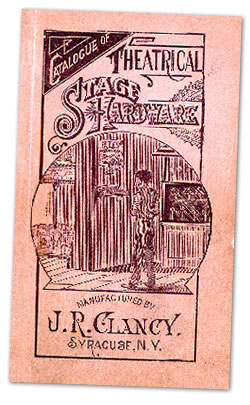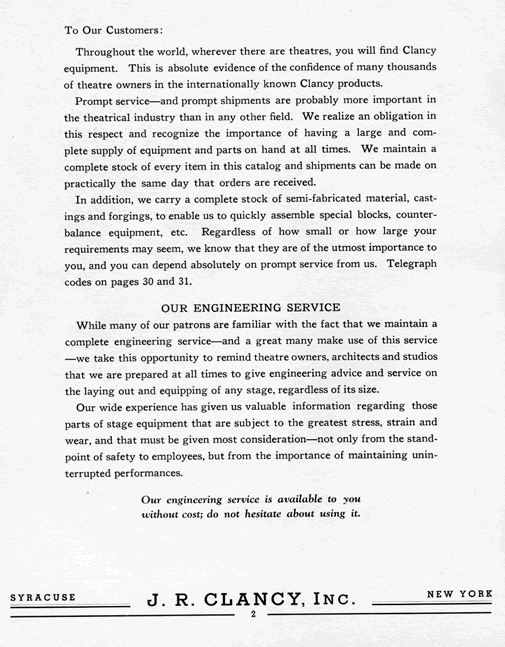The Last Word:
Going Back in Time to Find Common Ground
On a rainy August afternoon in Chicago, Illinois, something unusual happened that had never before occurred at an Association for Theatre in Higher Education (ATHE) Conference. A theatre historian, a dramaturge, and a technical director presented on a common topic. Even more unusual was the fact that these people were brought together through mutual interest in rigging equipment.
 A session titled “Historical Stage Technology: A Collaborative Conversation” included Dr. Tom Robson, assistant professor of theatre history at Millikin University; Marcella Nowak, an independent artist and scholar; and Paul Brunner, assistant professor and head of theatre technology at Indiana University. These three presenters represented three different focus groups within ATHE and discussed newly-uncovered archival materials from rigging manufacturer J.R. Clancy, courtesy of USITT.
A session titled “Historical Stage Technology: A Collaborative Conversation” included Dr. Tom Robson, assistant professor of theatre history at Millikin University; Marcella Nowak, an independent artist and scholar; and Paul Brunner, assistant professor and head of theatre technology at Indiana University. These three presenters represented three different focus groups within ATHE and discussed newly-uncovered archival materials from rigging manufacturer J.R. Clancy, courtesy of USITT.
Each presented an investigation and unique perspective on the J.R. Clancy Rigging Catalog Archives now housed by USITT, and the resulting discussion provoked conversation both about future use of these materials and methods for further interdisciplinary collaboration between these fields.
First, Mr. Brunner presented his view that, while this digital archive displays an invaluable resource of technical information on the history of American stagecraft in the past 125 years, not all that much has changed. All of the major components of modern counterweight rigging, including the arbor and ridged arbor guides, were introduced through JR Clancy catalogs by 1925.
Ms. Nowak shared her observation concerning the prevalence of tools and equipment for scenic painting in the catalogs, focusing much of her discussion on the acquisition of patents for many of Clancy’s signature products.
Finally, Dr. Robson performed an analysis of price fluctuations in Clancy’s products in the period around World War I to develop a thesis that the growth of the New Stagecraft in the United States owed as much to economic market forces as to the importation of a European design aesthetic.
The panelists and attendees agreed wholeheartedly that the J.R. Clancy rigging catalogs provided a wealth of information for theatre historians, designers, dramaturges, architects and technical directors. The potential exists for these catalogs, seen as primary resources and as historical artifacts in the eyes of a historian, to fill significant voids in the history of theatre and stagecraft in America, particularly near the turn of the 1900s. The catalogs further support collaboration between USITT and ATHE to continue exploring how each organization can support the other. Mr. Brunner spoke of his fear of theatre history classes, while Dr. Robson discussed his own ineptitude with technical theatre. These Clancy resources provided a point of intersection where each side can begin to understand the other, expanding knowledge and skills in the process.
Every catalog since John R. Clancy’s first in 1886 is available via pdf file, as a free resource from USITT www.usitt.org/jrclancyarchive/.


